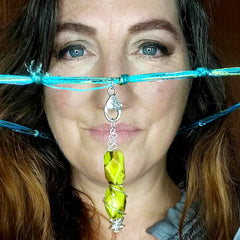Looking good in photos is more about attitude and less about looks.

It can be very disappointing to see yourself in photo after photo looking less than your best or worse still, looking completely terrible. Awful squirmy pictures showing off your insecurity and exagerating your faults etc. Aghh. This is made worse by the fact that everyone is so snap happy these days with their phones out all the time. Some people seem to have it all sorted out and look like models in every shot. Frustrating right? Let me tell you something interesting. Anybody can look good in photos.
You need headshots for work and even for social media business pages, customer relations shots and even in work for 'employee of the month' notice board shots. What happens when you hate having your picture taken? What happens if you feel your portrait is not worthy of the paper it's printed on or worse still, what if you are stunningly beautiful but nobody can take a proper picture of you? Tee hee!
I used to look awful in just about every photo taken of me even by professional photographers. At least after I turned 8 years old and became a little self conscious. Eventually though, after a lot of learning, I realised a few things. One thing was that I didn't want my insecurities to stop me from having the life I wanted, the fun I wanted and the work I wanted.
There are a few things that helped me to look better in photos and I will share some with you here. I promise if you with a little practice you will begin to see the difference so you feel as good as anyone when the cameras come out and you will look better in the photos too.
- Here are a few helpful tips about how to look good in photos followed by a few more about how to pose for photos. All of these tips are good for selfies too though I will add a few more for selfies especially at the end. The first few are about attitude and they are followed by more physical suggestions.
- First of all, learning how to pose for photos is not about thinking you are 'it' or 'beautiful' or even 'gorgeous' and it's not about you posing yourself in some contorted fashion to look a certain way such as sexy, beautiful or powerful necessarily. It's about being you. Looking like you. Representing yourself is you truly are in picture format at a given moment. Learning how to look good in photos is less about looks and more about attitude and your thoughts.
- If we don't look good in photos it usually means we are not being our true selves. Why would we look different in a photo than in normal life? Do we walk around all the time thinking 'I look awful', 'I look a mess', 'I never look good in real life', etc? Not really. Just sometimes maybe..
- Wear clothes that flatter or if you have something on that you know isn't great on you then play it down by layering it with something else. For example, a pale washed out shirt can be mitagated by a colourful scarf thrown casually around your neck, some lipstick to bring in colour or hold your hands together as though to fix a collar, earring or button (but don't look down at what you are doing).
- Tigten your tummy mussles and hold your shoulders back without sticking out your chest or you'll look like a little robin. Keep your chin up so you don't give yourself twenty chins. One or two is grand but extra ones to your normal few is funny. On the other hand don't lean your head back so that your eyes are shutting. Somewhere in the middle is good or, if you feel comfortable enough, tilt your head slightly downwards so your eyes will open wider.
- Have fun with striking poses and use the thought ideas above to help with that because sometimes it's hard to think of poses to do so thinking of different scenarios is helpful. Think of lots of your own scenarios so you can draw on them in photos. Trying to look 'curious' or 'contemplative', is tricky just out of the blue but if you think of a scenario where you hear something ringing the doorbell four times in a row you will naturally look curious. If you think of a distant memory of something important or try and remember something from the past, a name or a song etc, you will start to look contemplative.. Get the picture?
- Sometimes you can decide not to smile like you are showing off how many teeth you still have left. You can smile with your eyes and put on a little happy smile with your mouth (opening your mouth a little bit looks more natural and easy going, unless it's only a tiny smile.)
- If you want to look very glamorous then of course have your hair freshly washed and not flattened by a hat or a pillow. Fix your makeup without having too much on and wear flattering clothes. Maybe the photographer will set up another modelling light for the hair but don't sit under a light source if it causes a shadow.
- If you are at a table and your hand is under your chin or if any part of you is leaning against something else like the table or even arms at your side, position yourself mindfully and remember not to actually lean on that part of your body. For example, people who want to look muscular in photos fold their arms and lean they upper arms on their fists to make the arms look bigger. Some of us would rather not do that by accident. The same goes for leaning on your hands. You will bunch your poor face up.
- You can tilt your head a little to the side too. This will show a different aspect. It looks more casual and interactive, questioning or curious but gentle. Try it.
How to Take a Good Selfie
All of the tips leading to here are good things to consider for every photography situation including if you are interested in how to take a good selfie.
I have never been into selfie taking as per say. I didn't grow up with it and it's not something that I particularly love. However, I have had lots of experience taking selfies for Parade Handmade. I didn't start out taking shots of myself for the website or even having profile images of my face on my social media accounts. I am introverted and private for the most part and for the other part (smaller part) I'm extroverted and confident enough. I started taking pictures of myself a bit in photography college years ago, but just here and there, for the odd project.
Lately, I started taking selfies as more of a neccessity. At first, I thought that it was a bit strange that the CEO of a business featured in the product shots. I thought it a bit vain I suppose too. The suppliers of Parade Handmade are small artisian creators who don't supply their own imagery for their products. I realised pretty quickly that if I wanted to have my website populated by images of people wearing the products rather than flat images of hats on stands or worse lying down, then I would have to get on with it when my other models were not available. Initially, I asked family and friends to pose for me and I still do but it's hard to get it all coordinated all of the time. People have busy lives and are not always available at the right time so I just go for it. These days there are more and more people such as influencers who model the products they are selling so I decided I could do it too on my own website.
My Selfie Tips
-
Have a mirror nearby so you can make sure you are looking your best. Have good light near the mirror so you can see if your makeup is flawed or your false eyelashes are falling off (if you wear them.) You could have a hair falling in the wrong place or a smudge on your chin etc.
-
Don't shoot a selfie directly onto a social media platform. Instead shoot and save to your gallery first. That way you won't post photos accidently you would rather nobody saw. Go through them when you are finished and pick out the best ones. Tweak the ones you like with light enhancement or change the contrast for example.
-
See if your phone camera has accessability settings so you can give voice commands or a hand signal to shoot a photo instead of having to put your hand on the shutter. This is good for a selfie stick, tripod or even if you are hand holding. You can set it to shoot seconds after too to give you time to pose. This setting can be troublesome too if you have it set for too long as your pose can look forced if you have to hold it too long. Play around with the settings to see what is comfortable for you.
-
Shoot facing the light, near a window preferably but not in direct sunlight and not with an audience outside, if possible. A selfie ring light is perfect too but take a couple of shots on different settings to see what effect you want.
-
Make sure your background is clear and that you are a few feet away from the background so you won't have a shadow halo around your head.
-
Place things that enhance your space in the background such as a plant peeping in the side of the frame, a pretty picture or candle etc
-
Shoot from a higher angle to your face but not too high. I probably don't have to explain this these days but for those who are not familiar with the intricacies of phones, you don't tilt your head up to face the camera. Instead just look up with your eyes. This will cause them to open completely and since they are closer to the lens than the rest of your face, they will seem bigger. There are apps that will emphasise this even more but I don't recommend them really.
-
Think of particular thoughts to provoke different expressions. We are capapable of making many more expressions than we can name so thinking of different events and reacting to the thoughts and feelings they provoke can be very helpful.
-
Have good music on to inspire you.
-
Try on different clothes, colours, styles and even do some shots to just loosen up and get your imagination going and treat it as a fun game.



